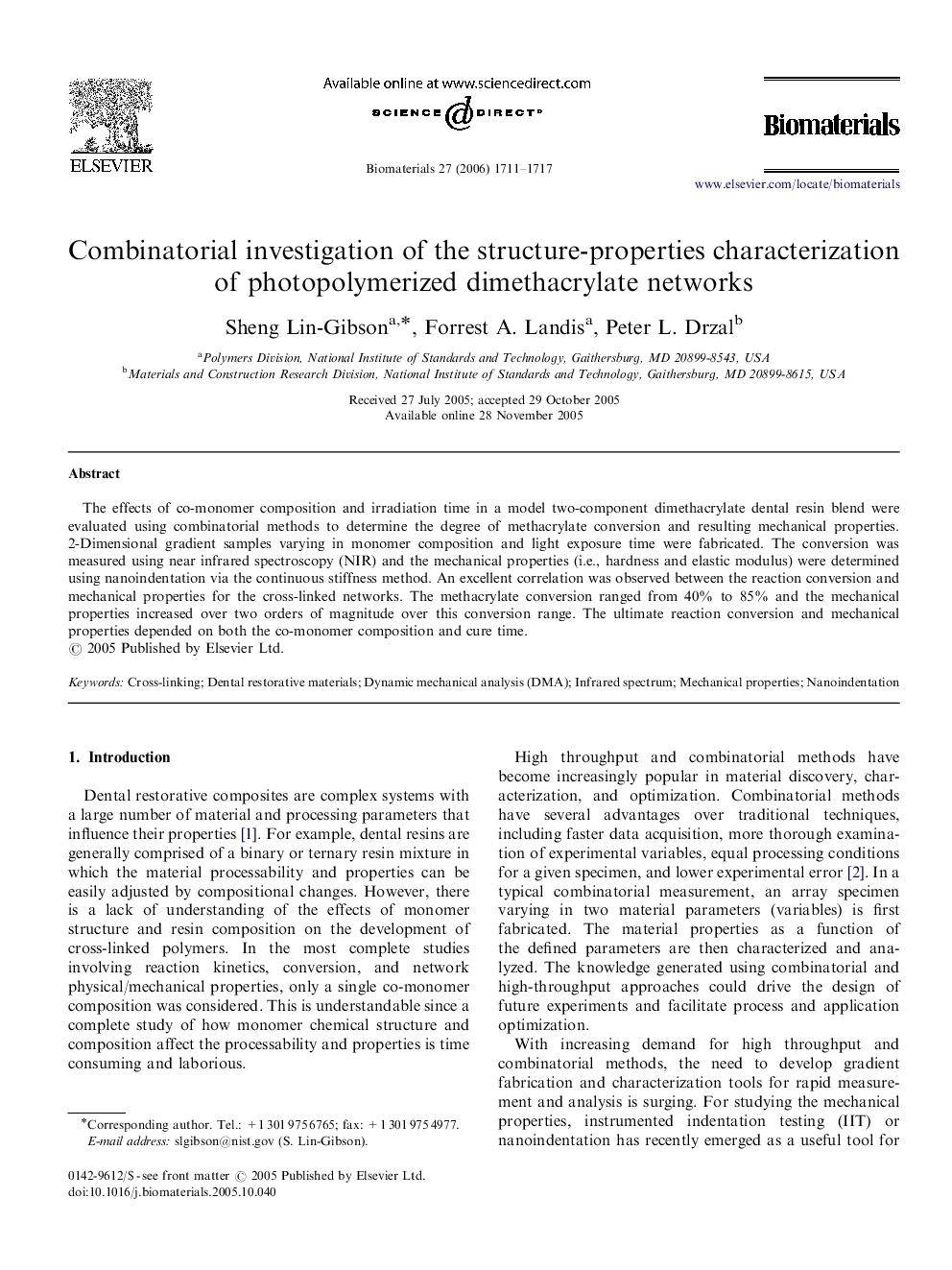| Article ID | Journal | Published Year | Pages | File Type |
|---|---|---|---|---|
| 10759 | Biomaterials | 2006 | 7 Pages |
The effects of co-monomer composition and irradiation time in a model two-component dimethacrylate dental resin blend were evaluated using combinatorial methods to determine the degree of methacrylate conversion and resulting mechanical properties. 2-Dimensional gradient samples varying in monomer composition and light exposure time were fabricated. The conversion was measured using near infrared spectroscopy (NIR) and the mechanical properties (i.e., hardness and elastic modulus) were determined using nanoindentation via the continuous stiffness method. An excellent correlation was observed between the reaction conversion and mechanical properties for the cross-linked networks. The methacrylate conversion ranged from 40% to 85% and the mechanical properties increased over two orders of magnitude over this conversion range. The ultimate reaction conversion and mechanical properties depended on both the co-monomer composition and cure time.
